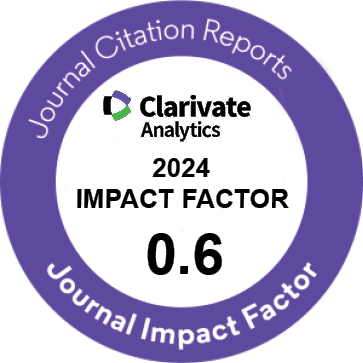| Original Article | |
| Predicting Value of Different Ultrasound Markers for Diagnosing Morbidly Adherent Placenta and Associated Complications | |
| Mojgan Barati, Mahvash Zargar, Mahin Najafian, Najmie Saadati, Maryam Rekabizadeh | |
| Faculty of Medicine, Fertility, Infertility, and Perinatology Center, Ahvaz Jundishapour University of Medical Science, Ahvaz, Iran | |
|
IJWHR 2020; 8: 169-173 DOI: 10.15296/ijwhr.2020.27 Viewed : 3346 times Downloaded : 2566 times. Keywords : Cesarean section, Placenta previa/accrete, Hysterectomy, Third trimester |
|
| Full Text(PDF) | Related Articles | |
| Abstract | |
Objectives: This study was conducted to evaluate the importance of different sonographic findings in the detection of the morbidly adherent placenta (MAP) among pregnant women and then to assess the correlation between delivery complications and ultrasonographic findings. Materials and Methods: This analytical and prospective study was conducted on 150 pregnant women with a previous history of a cesarean section from 2015 to 2017. The sonographic findings included the location of the placenta, retroplacental aliasing, bulging toward the bladder, lacuna, and the lack of sonolucent area behind the placenta. Finally, these patients were followed until delivery and their complications were assessed as well. Results: Of 150 previous cesarean sectioned patients, 101 (67.3%) cases had not sonographic findings of MAP. No morbidity was found in those with no sonographic findings of MAP. Fifty-nine pregnant mothers had the sonographic criteria of MAP prior to delivery, of whom 39 (80%) patients had MAP during the cesarean section. In 39 patients with confirmed MAP, 27 cases underwent a hysterectomy and 12 received special procedures for uterus reservation. In addition, 8 cases had bladder rupture, 25 cases experienced ICU hospitalization, and 33 cases needed a blood transfusion. Of these 39 confirmed MAP, 31 (79.48%) and 8 patients (20.51%) had previa and an anterior placenta without previa, respectively. Finally, no mortality was reported in the current study. Conclusions: In general, the most important sonographic factors on predicting MAP were the location of placenta, the aliasing and bulging while lacuna and the lack of sonolucent area had less value. The results demonstrated 93%, 100%, 90%, 79.59%, and 100% accuracy, sensitivity, specificity, as well as positive and negative predictive values for the prediction of MAP by ultrasonography, respectively.
Supplementary Materials |
Cite By, Google Scholar
Google Scholar
PubMed
Online Submission System
 IJWHR ENDNOTE ® Style
IJWHR ENDNOTE ® Style
 Tutorials
Tutorials
 Publication Charge
Women's Reproductive Health Research Center
About Journal
Publication Charge
Women's Reproductive Health Research Center
About Journal
Aras Part Medical International Press Editor-in-Chief
Arash Khaki
Mertihan Kurdoglu Deputy Editor
Zafer Akan























